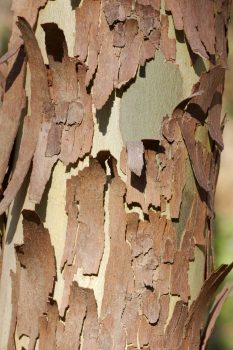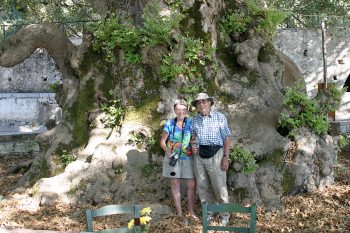One of the most easily identified trees in the forests of the eastern United States is the American sycamore (Platanus occidentalis). Even from a distance, it’s easy to pick out the sycamore by it’s white bark. There are places along the highways in the area, particularly where the road goes over river or stream valleys, where they are quite the most numerous tree. They grow very well in wet floodplains and of course they get quite large, often reaching 80 or more feet in height and trees with a trunk diameter in excess of four feet are not particularly uncommon. In addition to the white bark on the upper portions of the tree, lower down, where the branches are trunk are thicker, the brown outer bark peels away in a very distinctive way, as seen in this photograph of a tree probably not more than 15 or at most 20 years old.
In 1981 my parents and brothers spent eight weeks backpacking around Greece. We had spent a week there in 1971 and my mom started planning then to return. On this longer trip in 1981 we were in Crete (twice, actually) and happened to find this old plane tree.
The London plain tree is a cross between the American sycamore and Oriental plane tree, P. orientalis. In 2007, Cathy, Dorothy, and I went to Greece with my mom and dad for about three weeks of camping. We were able to find this tree again, in Krási. It is claimed to be the oldest and largest plain tree in the world. I don’t know if that’s true, but it’s certainly big, with a trunk circumference of nearly 80 feet. As you can see, it isn’t exactly a perfect cylindrical trunk, and the tree isn’t nearly as tall as many American sycamores that I’ve come across. Still, it’s a mighty fine specimen.


